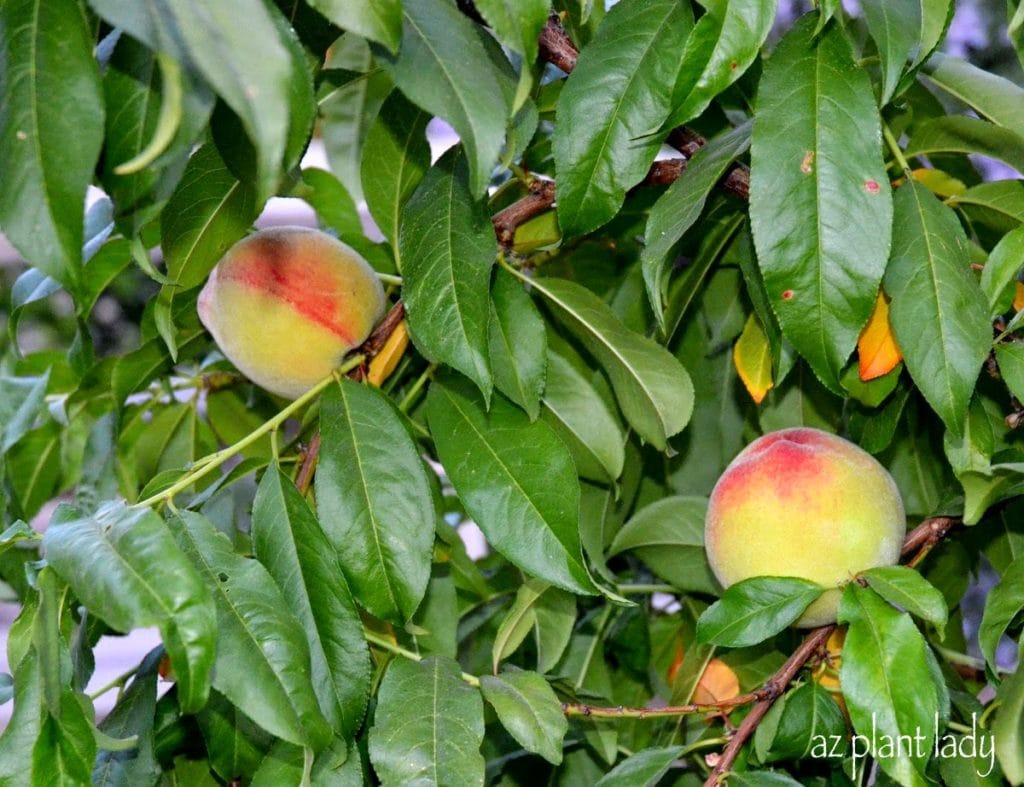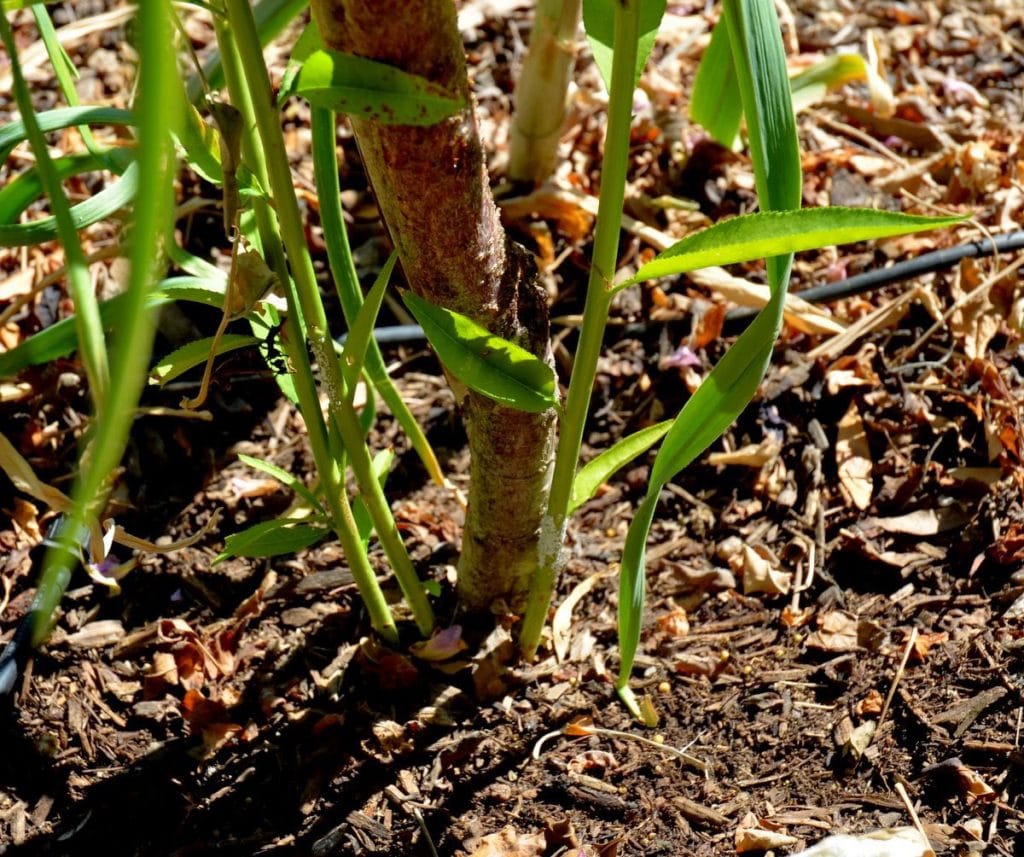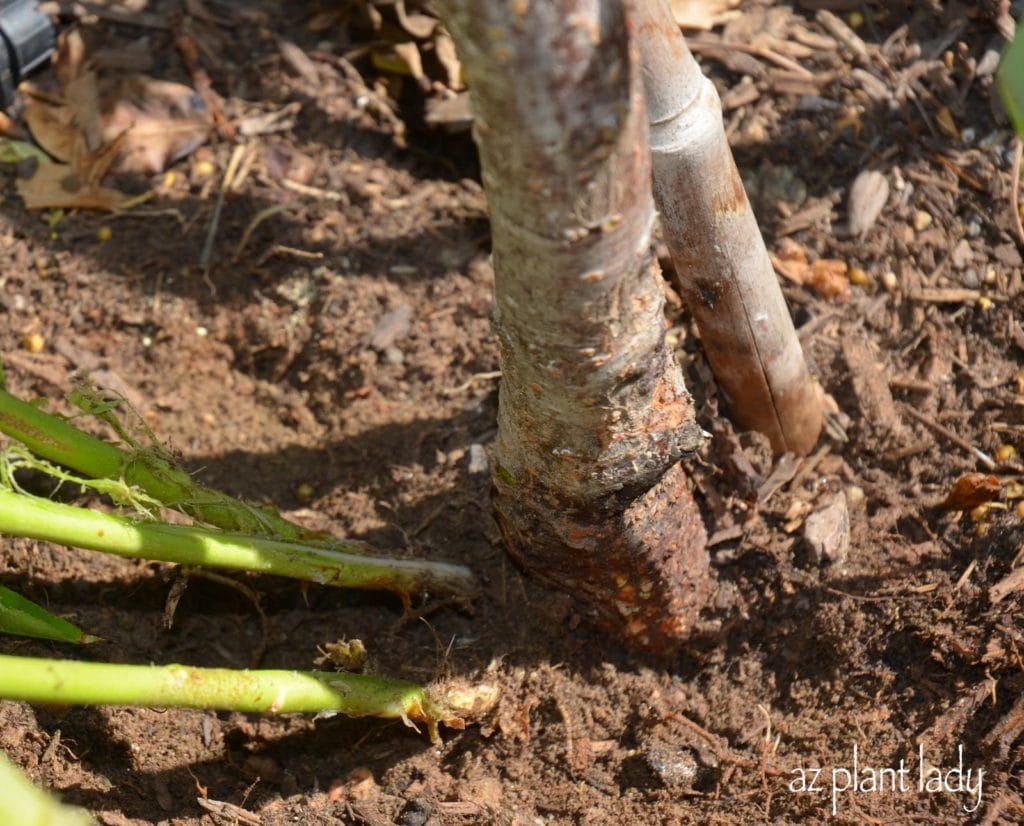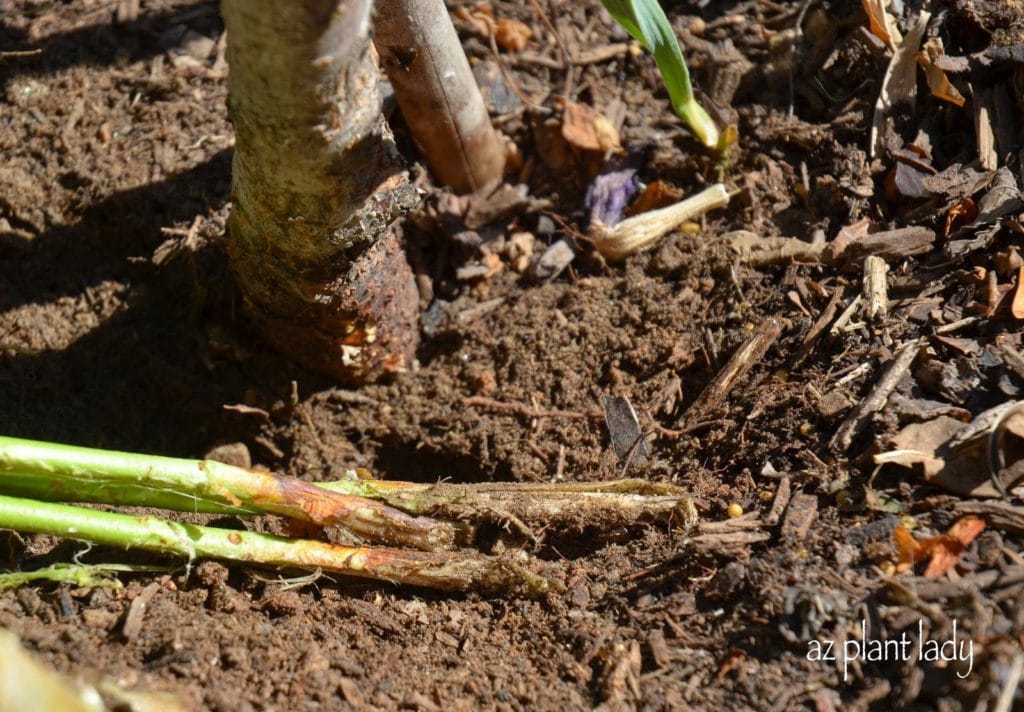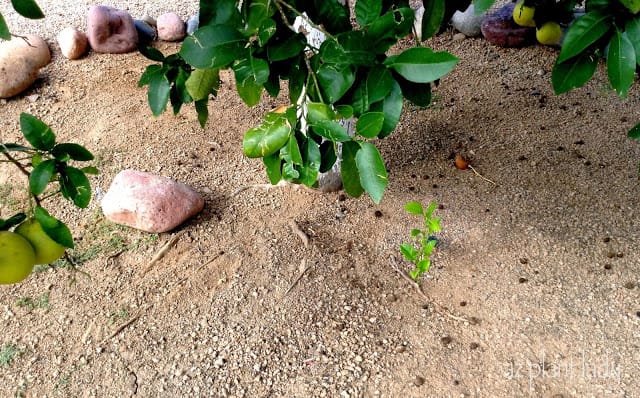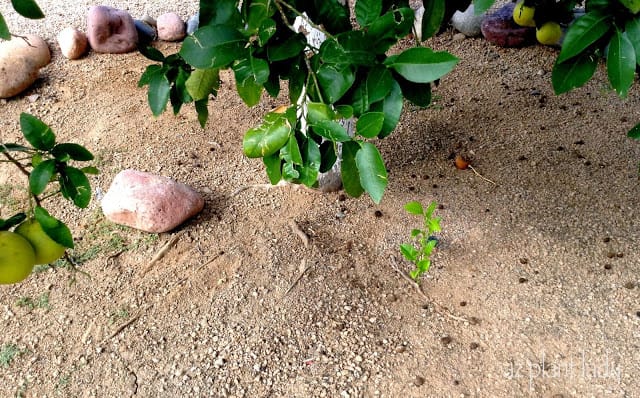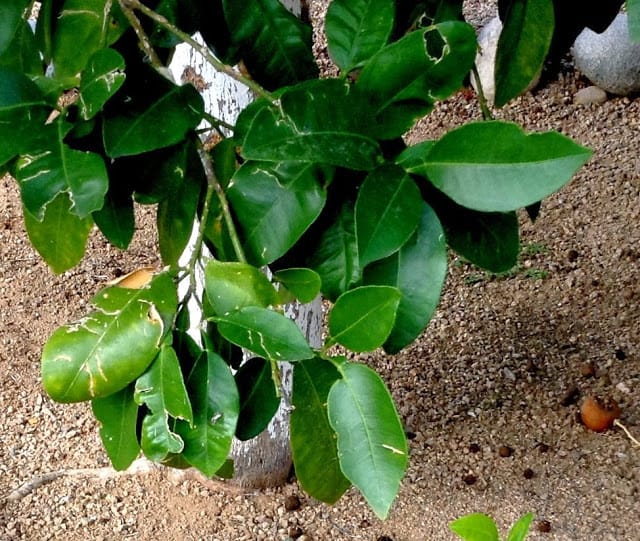Yesterday, I showed you a photo of a citrus tree that I came upon during a landscape consultation.
I mentioned that there was more then one problem affecting this tree. There are actually two large problems and one small problem.
Problem #1: Look at the area near the trunk. Notice a little green shoot coming up from a small citrus root?
This innocent-looking little sucker can cause a lot of problems if allowed to grow. The reason for this is that citrus trees are grafted onto a vigorous rootstock.
Basically, the top of a citrus tree and the roots come from different plants. Citrus trees we enjoy in our landscape don’t have a particularly strong root system. So, they are grafted onto a thorny, citrus tree that has vigorous roots and sour fruit.
Occasionally, small suckers from the thorny, citrus tree start to grow up from the roots or the base of the trunk below the bud union. The bud union is a bulge around the lower part of the tree, about a foot above the ground. Any suckers that originate from below the bud union should be removed, because if allowed to grow – the thorny citrus tree will grow and take over.
Now, back to our original picture for our second problem…
Problem #2: Look closely at the soil and you can see signs of shallow irrigation. How can you tell? Look at the small citrus roots criss crossing out from the tree. In a properly watered citrus tree, you shouldn’t see the roots at all.
This indicates that when the tree is irrigated, that the water is not turned on long enough to penetrate to the recommended 3 ft. depth.
When I pointed this out to the homeowner, she indicated that if the water is turned for too long, that it runs out from the basin.
There are two solutions for this problem.
– Elevate the sides of the basin to at least 6 inches high and allow to fill with water. Next, check to see how deeply you have watered by taking a long, narrow stick or piece of rebar and push it into the wet soil. It should go down fairly easily to the point where the water permeates. Pull it back out and you will get a good idea of how much more or less water you will need.
– If after trying the first solution and you still haven’t hit the recommended 3 ft. depth, then try this trick – water in the morning, filling up the basin. Allow the water to sink and fill the basin again later in the day. This should help you achieve the right depth.
The smaller problem is really nothing to be overly concerned about…
If you look closely, some of the leaves have ragged edges and holes. The damage is caused by the Orange Dog Caterpillar. This caterpillar appears in the summer months and resemble ‘bird poop’ which makes them hard to spot.
These caterpillars will turn into the beautiful Giant Swallowtail butterfly. Mature citrus trees can usually handle the damage from the caterpillars, so in most cases, the best thing to do is nothing.
For additional resources for raising citrus in the Valley of the Sun and other areas throughout the Southwest, check out this helpful link.
Do you have citrus trees in your landscape? Which kinds?
